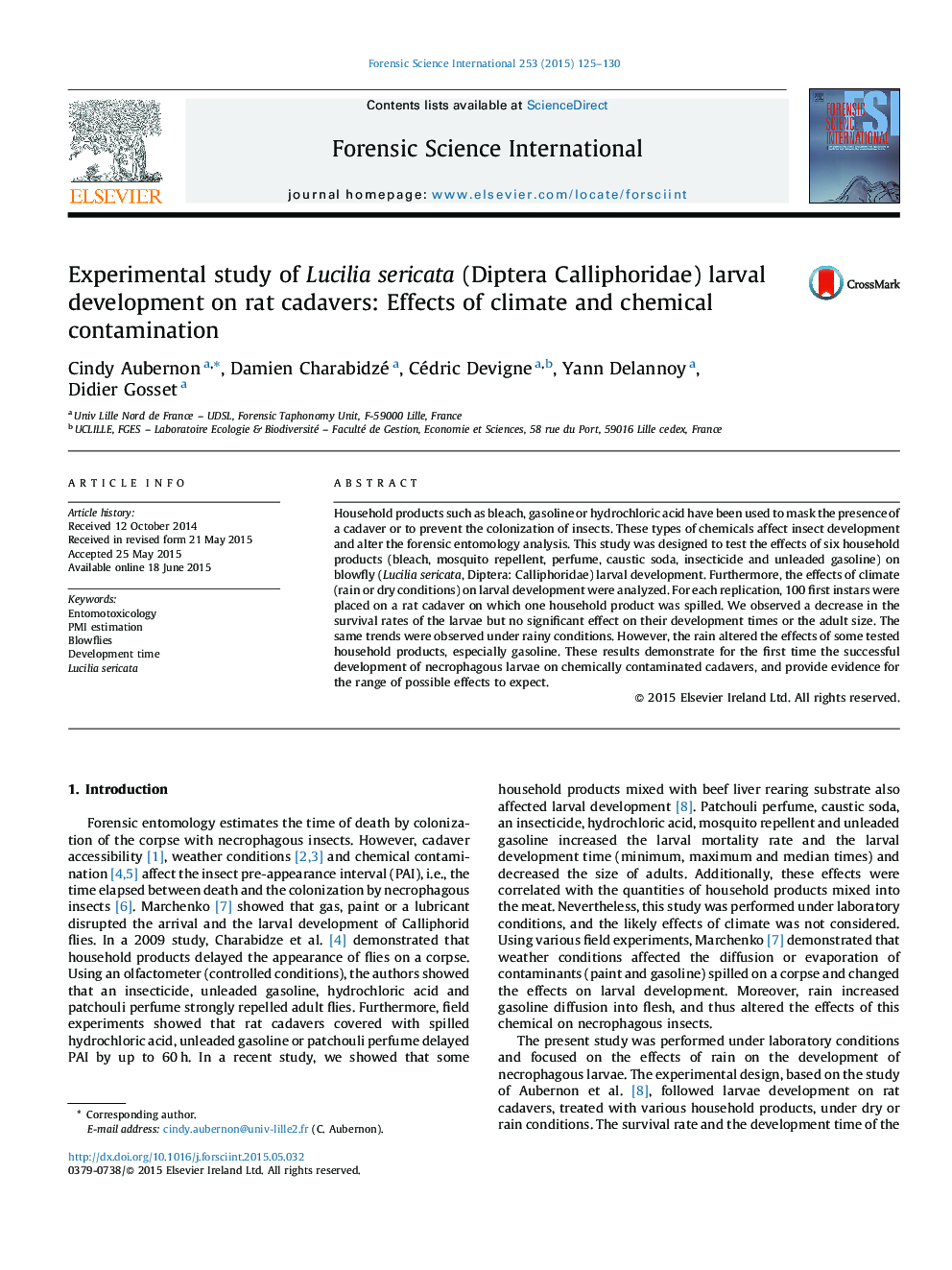| کد مقاله | کد نشریه | سال انتشار | مقاله انگلیسی | نسخه تمام متن |
|---|---|---|---|---|
| 95264 | 160423 | 2015 | 6 صفحه PDF | دانلود رایگان |
• Survival and subsequent development of Diptera larvae have been studied on contaminated rat cadaver.
• Rainy and dry climatic condition were investigated.
• All tested household products impact insects survival rate and adult size.
• Rain impact household products effects.
• Some larvae survived in each replication, whatever the product and condition tested.
Household products such as bleach, gasoline or hydrochloric acid have been used to mask the presence of a cadaver or to prevent the colonization of insects. These types of chemicals affect insect development and alter the forensic entomology analysis. This study was designed to test the effects of six household products (bleach, mosquito repellent, perfume, caustic soda, insecticide and unleaded gasoline) on blowfly (Lucilia sericata, Diptera: Calliphoridae) larval development. Furthermore, the effects of climate (rain or dry conditions) on larval development were analyzed. For each replication, 100 first instars were placed on a rat cadaver on which one household product was spilled. We observed a decrease in the survival rates of the larvae but no significant effect on their development times or the adult size. The same trends were observed under rainy conditions. However, the rain altered the effects of some tested household products, especially gasoline. These results demonstrate for the first time the successful development of necrophagous larvae on chemically contaminated cadavers, and provide evidence for the range of possible effects to expect.
Journal: Forensic Science International - Volume 253, August 2015, Pages 125–130
